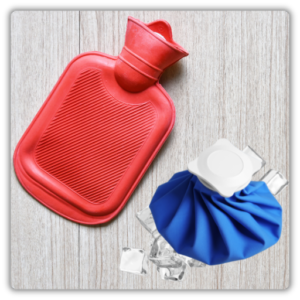Understanding The Sciatic Nerve
 Understanding the sciatic nerve is essential for managing sciatica pain. The sciatic nerve runs from the lower back down to the buttock and into the right leg. Pressure on the nerve can cause pain and cause sciatica, leading to discomfort that people often describe as sharp or aching. Pain may last for minutes at a time, and pain can help to relieve sciatica pain.
Understanding the sciatic nerve is essential for managing sciatica pain. The sciatic nerve runs from the lower back down to the buttock and into the right leg. Pressure on the nerve can cause pain and cause sciatica, leading to discomfort that people often describe as sharp or aching. Pain may last for minutes at a time, and pain can help to relieve sciatica pain.
There are different types of sciatica, and pain caused by this condition can become worse with certain activities. To manage pain, various treatment options exist, including the use of hot and cold therapy. For instance, use an ice pack for 20 minutes at a time to decrease pain, or lie on your back to provide some relief. Pain relievers can also help to relieve the pain associated with sciatic nerve issues.
KEY POINTS
Sciatica is caused by compression or irritation of the sciatic nerve, often due to conditions like herniated discs, spinal stenosis, or piriformis syndrome, leading to radiating pain from the lower back to the legs.
Effective remedies for sciatica pain include alternating heat and cold packs, gentle stretching exercises, and over-the-counter medications to reduce inflammation and alleviate discomfort.
Preventing sciatica recurrence involves maintaining good posture, practicing core-strengthening exercises, avoiding heavy lifting, and ensuring a supportive sleep environment.
Lifestyle changes, such as regular physical therapy and massage therapy, combined with proactive management strategies, can minimize symptoms and reduce the need for surgical intervention.

Pop in your email below, and we’ll zip it straight to your inbox so you never lose it!
What are the common causes of sciatica?
Sciatica is characterized by pain radiating along the path of the sciatic nerve, which extends from the lower back through the hips and buttocks and down each leg. Several common conditions can lead to sciatica:
•Herniated or Slipped Disc: Occurs when a disc in the spine bulges out and presses on the sciatic nerve.
•Spinal Stenosis: Narrowing of the spinal canal that compresses the nerve roots.
•Piriformis Syndrome: When the piriformis muscle irritates or compresses the sciatic nerve.
•Degenerative Disc Disease: Age-related wear and tear on spinal discs leading to nerve compression.
•Spondylolisthesis: A condition where one vertebra slips over another, pinching the sciatic nerve.
•Trauma or Injury: Direct injuries to the lower back or spine can damage the sciatic nerve.
•Tumors or Infections: Although rare, growths or infections in the spine can press on the sciatic nerve.
Understanding these causes is essential for effective diagnosis and treatment of sciatica.
What are effective home remedies for sciatica pain relief?
Applying heat and cold packs
 Applying heat and cold packs can effectively ease the pain of back pain, especially for people with sciatica. Heat from a heating pad can help reduce pain and improve range of motion, while cold packs can minimize inflammation of the sciatic nerve and irritation.
Applying heat and cold packs can effectively ease the pain of back pain, especially for people with sciatica. Heat from a heating pad can help reduce pain and improve range of motion, while cold packs can minimize inflammation of the sciatic nerve and irritation.
After a few days, sciatica symptoms may include a tingle or numbness in the affected leg. If pain in your back doesn’t subside, consider discussing options like nsaids or injection therapies. However, improper use of heat or cold may increase your risk of further nerve damage or make sciatica worse.
Surgery may be necessary for severe conditions like a herniated disk or bone spur, particularly if sciatica pain may impair daily activities. Regular exercises may also help manage sciatica by strengthening surrounding muscles and reducing pressure on the sciatic nerve.
Stretching exercises to ease sciatic pain
Sciatica may arise from irritation of the sciatic nerve, resulting in intense pain that affects the lower back and legs. To treat sciatica, gentle stretches can help alleviate low back pain and prevent sciatica coming back. Many people describe sciatica as a debilitating condition.
These gentle stretches can be done days after sciatica pain starts to ease discomfort. Sciatica can also lead to worsening pain, especially if not addressed. Some options include steroid medication for severe cases, but focusing on management of sciatica through movement is essential.
When performing stretches, work on one of your legs one at a time to avoid making the pain worse. Remember, while pain doesn’t always subside quickly, consistent practice can make a significant difference in your recovery.
Using over-the-counter pain relief medications
Over-the-counter pain relief medications can be effective for individuals who get sciatica. These medications provide temporary relief when feel pain radiates down the lower back to the lower leg.
Research published in the annals of internal medicine highlights how chronic pain affects quality of life, making it crucial to manage symptoms effectively.
How to prevent sciatica from coming back?
Tips for maintaining a healthy spine
Maintain good posture while sitting or standing to reduce strain on your spine.
Regular exercise, especially core-strengthening workouts, can enhance spinal stability.
Avoid heavy lifting; if necessary, use proper techniques to protect your back.
Finally, ensure a comfortable sleep environment with a supportive mattress and pillow.
Exercises to strengthen your lower back
To strengthen your lower back, incorporate exercises like bridges and bird-dogs. These movements enhance core stability and promote muscle balance. Additionally, planks and supermans can effectively target the lower back region. Consistent practice will improve strength, reduce pain, and support overall spinal health.
Lifestyle changes to reduce your risk of sciatica
Making lifestyle changes can significantly reduce your risk of sciatic nerve pain. Incorporating physical therapy and massage therapy into your routine can help with sciatica symptoms, alleviating severe pain effectively.
If you experience persistent discomfort, it’s essential to see a doctor for advice. In some cases, avoiding surgery for sciatica is possible with proper management and preventive measures.











